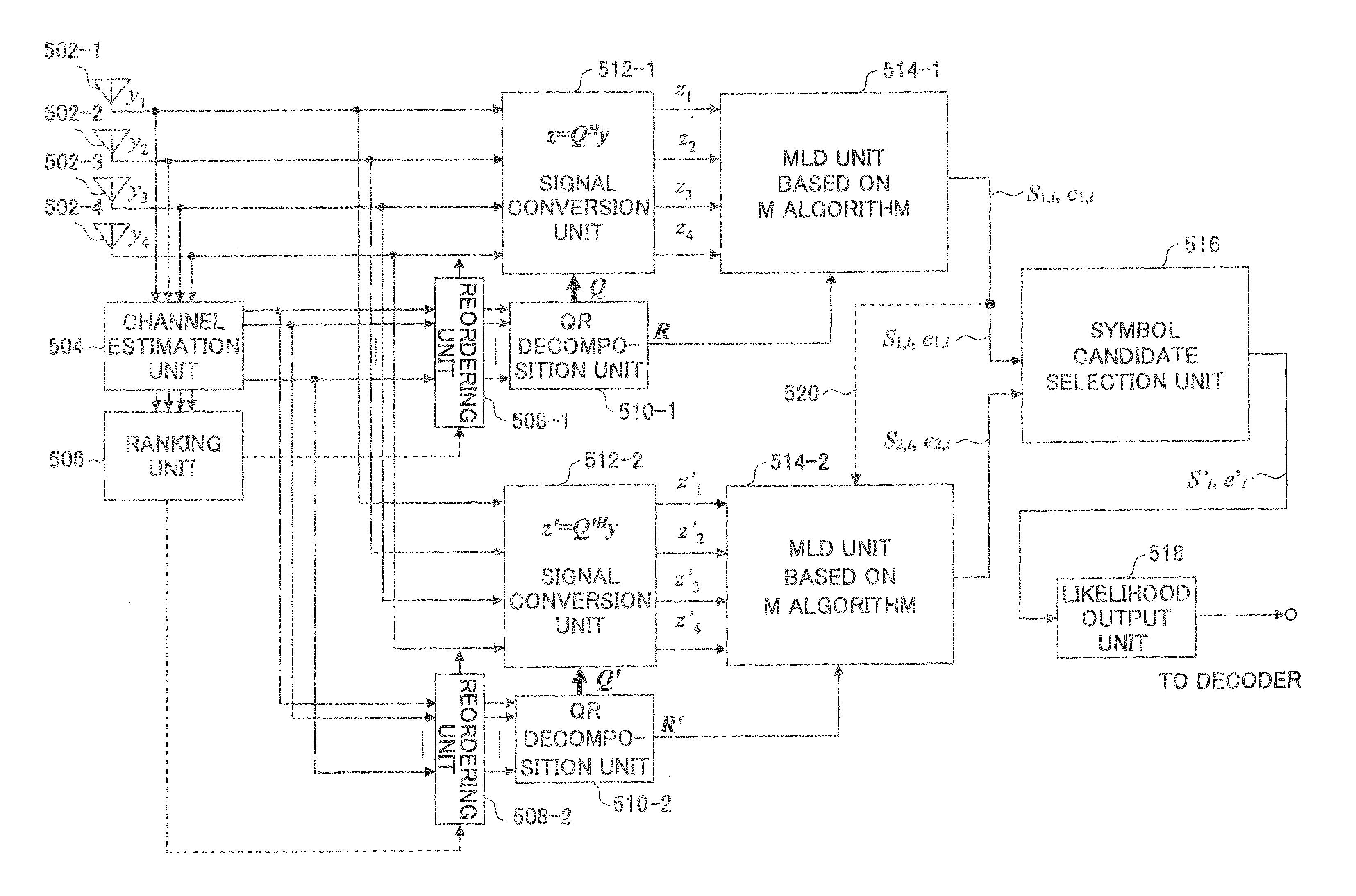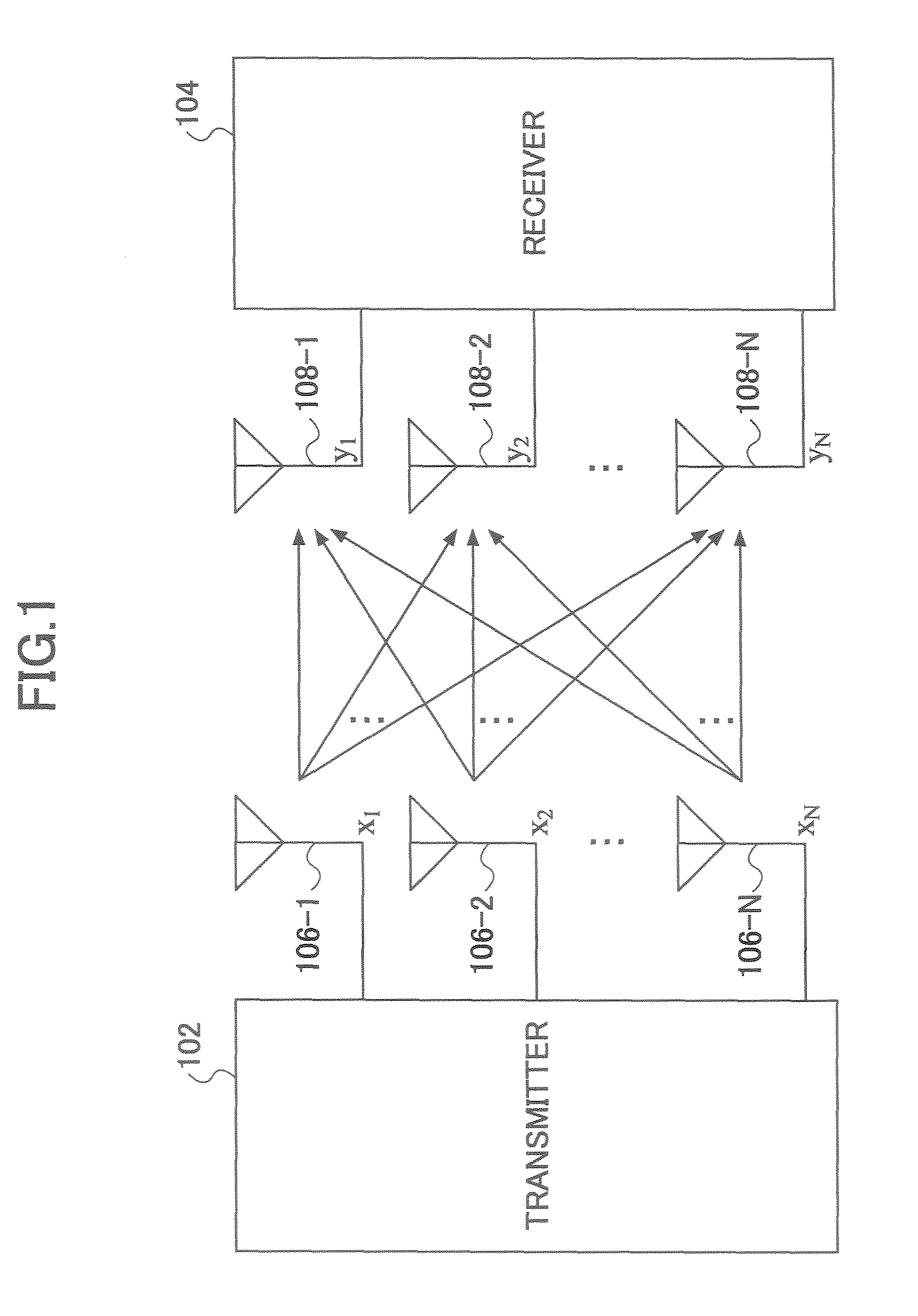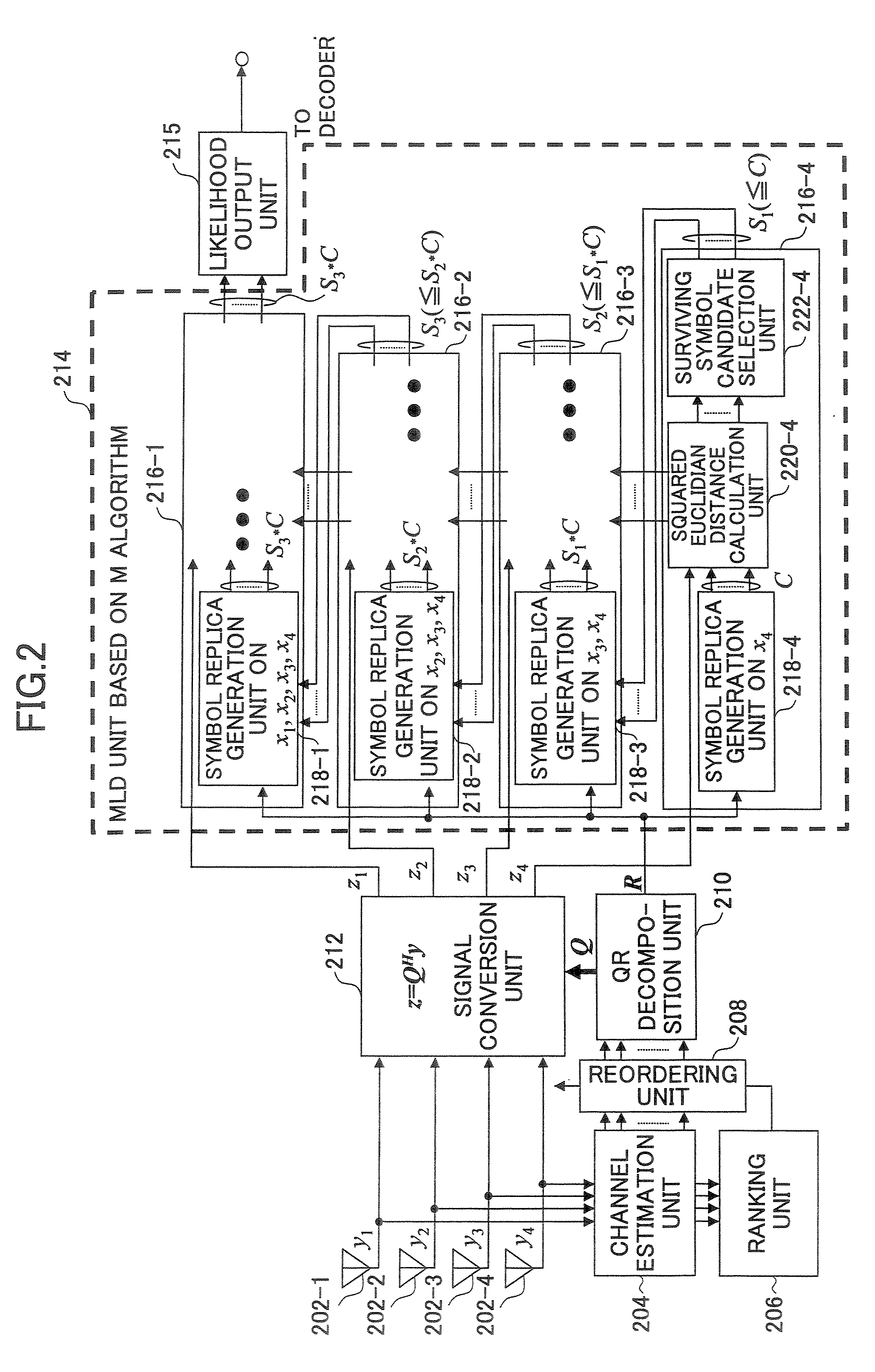Signal separating device and signal separating method
a signal separation and signal technology, applied in multi-frequency code systems, multi-plex communication, diversity/multi-antenna systems, etc., can solve the problem of varying the quality of signal estimation accuracy among a plurality of transmission signals, and achieve the effect of improving signal detection accuracy
- Summary
- Abstract
- Description
- Claims
- Application Information
AI Technical Summary
Benefits of technology
Problems solved by technology
Method used
Image
Examples
first embodiment
[0057]FIG. 5 shows a partial block diagram of a receiver for performing the signal detection method according to an embodiment of the present invention. For the sake of simplicity, it is assumed that four transmission signals x=(x1 x4)T are transmitted from the four transmission antennas respectively with the 16QAM modulation scheme. But, the number of antennas and the modulation scheme and the like are not limited to these. The receiver includes a plurality of receiving antennas 502-1, 502-2, 502-3 and 502-4, a channel estimation unit 504, a ranking unit 506, reordering units 508-1 and 2, OR decomposition units 510-1 and 2, signal conversion units 512-1 and 2, maximum likelihood determination units 514-1 and 2, symbol candidate selection unit 516 and a likelihood output unit 518. Since each of the maximum likelihood determination units 514-1 and 2 includes configuration and functions similar to those of the maximum likelihood determination unit 214 shown in FIG. 2, detailed descrip...
second embodiment
[0084]Although maximum likelihood determination on the first order is performed completely independently of maximum likelihood determination on the second order in the first embodiment, a part of determination results of one side may be incorporated in determination calculation in another side. For example, determination results on the first and second transmission signals x1 and x2 in maximum likelihood determination results on the first order shown in FIG. 5 may be used for maximum likelihood determination on the second order. Information is provided from the maximum likelihood determination unit 514-1 to the maximum likelihood determination unit 514-2 via a signal line 520.
[0085]As shown in FIG. 8, symbol candidates (enclosed by a dotted line frames of the first and second transmission signals x1 and x2 included in determination results S1,i based on the first order are used for maximum likelihood determination based on the second order. In the example shown in the figures instea...
PUM
 Login to View More
Login to View More Abstract
Description
Claims
Application Information
 Login to View More
Login to View More - R&D
- Intellectual Property
- Life Sciences
- Materials
- Tech Scout
- Unparalleled Data Quality
- Higher Quality Content
- 60% Fewer Hallucinations
Browse by: Latest US Patents, China's latest patents, Technical Efficacy Thesaurus, Application Domain, Technology Topic, Popular Technical Reports.
© 2025 PatSnap. All rights reserved.Legal|Privacy policy|Modern Slavery Act Transparency Statement|Sitemap|About US| Contact US: help@patsnap.com



